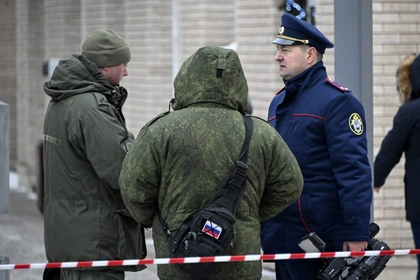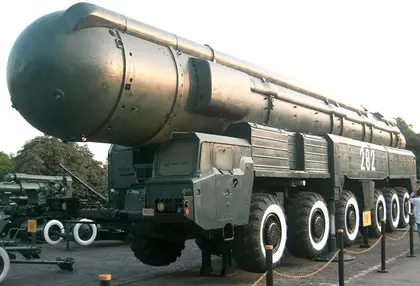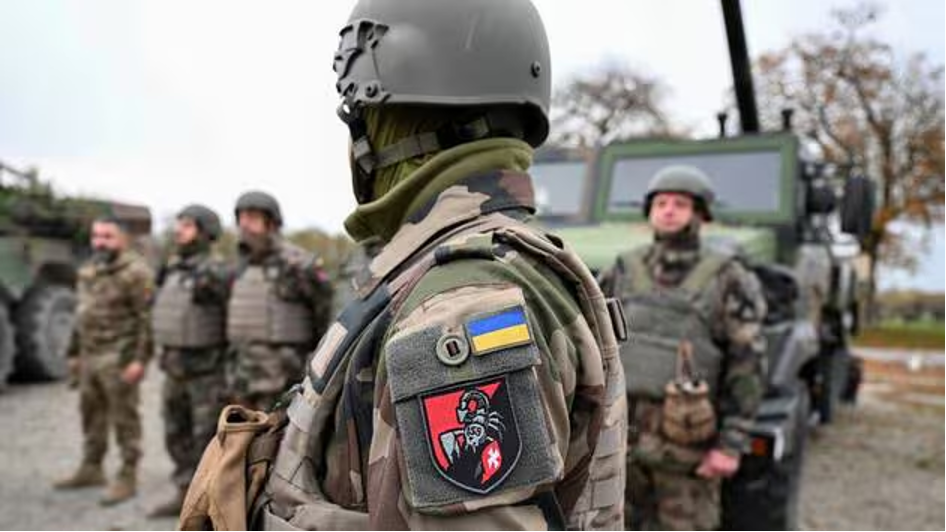Up until Dec. 5, 1994, Ukraine was officially the third-largest nuclear power in the world.
This year, Ukraine marked the 29th anniversary of the Budapest Memorandum, which saw the transfer of Ukraine’s nuclear weapons, inherited from the Soviet Union upon its dissolution, to Russia in exchange for a series of security assurances that should’ve ensured the territorial integrity and sovereignty of a freshly independent Ukraine.
JOIN US ON TELEGRAM
Follow our coverage of the war on the @Kyivpost_official.
As Russia annexed Crimea in 2014 and subsequently launched a full-scale invasion against Ukraine in February 2022 – even going as far as threatening to use tactical nuclear weapons – many Ukrainians have questioned the historic decision made in 1994.
As the war and talks of post-war security guarantees continue, perhaps it’s worth revisiting the memorandum and understanding how a single decision continues to haunt a country close to three decades later.
Soviet Nuclear Weapons in Ukraine Pre-1994
Due to the strategic location of Ukraine during the Cold War, it inherited a formidable nuclear arms stockpile upon the dissolution of the Soviet Union alongside Russia, Belarus and Kazakhstan.
Its nuclear arsenal included close to 1,700 strategic nuclear warheads, as well as a bomber fleet and intercontinental ballistic missiles (ICBMs) that rivaled most other nuclear-capable nations at the time. However, it is to be noted that while Ukraine physically possessed the weapons and the expertise to develop and maintain them – although the lack of resources would’ve likely prevented it from doing so – Moscow retained control over said weapons.

Suspect Detained in Moscow Bomb Attack That Killed Chemical Weapons General
In comparison, the US stockpile of warheads in 1994 was 10,979, while estimations placed the number of nuclear warheads in Russia at a total of 17,275 in 1991, combining those of strategic and tactical purposes.
Budapest Memorandum
The Budapest Memorandum on Security Assurances is an international agreement aimed at addressing concerns from Ukraine over security and territorial integrity upon nuclear disarmament. It was signed on Dec. 5, 1994, between Ukraine, the US, the UK and Russia against the backdrop of global arms control after the Cold War, with then-US President Bill Clinton calling the world a “safer place” after signing the memorandum.
Donald M. Blinken, father of current US Secretary of State Antony Blinken, was also in attendance as the US ambassador to Hungary at the time.
The document signified the former Soviet state’s accession to the Treaty of the Non-Proliferation of Nuclear Weapons as a non-nuclear-weapon state after a series of talks as Ukraine sought guarantees and compensation for giving up its nuclear stockpile.
Here are the six points outlined in the original document:
- The United States of America, the Russian Federation, and the United Kingdom of Great Britain and Northern Ireland, reaffirm their commitment to Ukraine, in accordance with the principles of the CSCE [Commission on Security and Cooperation in Europe] Final Act, to respect the Independence and Sovereignty and the existing borders of Ukraine.
- The United States of America, the Russian Federation, and the United Kingdom of Great Britain and Northern Ireland, reaffirm their obligation to refrain from the threat or use of force against the territorial integrity or political independence of Ukraine, and that none of their weapons will ever be used against Ukraine except in self-defense or otherwise in accordance with the Charter of the United Nations.
- The United States of America, the Russian Federation, and the United Kingdom of Great Britain and Northern Ireland, reaffirm their commitment to Ukraine, in accordance with the principles of the CSCE Final Act, to refrain from economic coercion designed to subordinate to their own interest the exercise by Ukraine of the rights inherent in its sovereignty and thus to secure advantages of any kind.
- The United States of America, the Russian Federation, and the United Kingdom of Great Britain and Northern Ireland, reaffirm their commitment to seek immediate United Nations Security Council action to provide assistance to Ukraine, as a non-nuclear-weapon State Party to the Treaty on the Non-Proliferation of Nuclear Weapons, if Ukraine should become a victim of an act of aggression or an object of a threat of aggression in which nuclear weapons are used.
- The United States of America, the Russian Federation, and the United Kingdom of Great Britain and Northern Ireland, reaffirm, in the case of Ukraine, their commitment not to use nuclear weapons against any non-nuclear-weapon State Party to the Treaty on the Non-Proliferation of Nuclear Weapons, except in the case of an attack on themselves, their territories or dependent territories, their armed forces, or their allies, by such a state in association or alliance with a nuclear weapon state.
- The United States of America, the Russian Federation, and the United Kingdom of Great Britain and Northern Ireland will consult in the event a situation arises which raises a question concerning these commitments.
However, as Russia’s invasion of Ukraine continued in blatant violation of the terms established in the memorandum, many questioned the effectiveness of such agreements and whether Ukraine should have given up its nuclear arsenal in the 1990s.
The failure of the memorandum has also raised an important question as Ukraine continues the discussion on some form of post-war security guarantees – what good is an agreement if there’s no way to enforce it?
Nuclear Disarmament
Ukraine’s nuclear disarmament process was an incremental process that took several years, according to a publication in 1999.
Russia and Ukraine had been engaged in discussions since at least 1992, but no agreements were reached until the US was involved in early 1994 when a trilateral agreement was signed.
Under the agreement, at least 200 nuclear weapons (including SS-19 and SS-24 ICBMs) would be transferred from Ukraine to Russia within 10 months, with the rest transferred within “the shortest possible time.” All SS-24 missiles from Ukraine would also be deactivated with their warheads removed within the same period.
In return, Russia would send 100 tons of fuel for nuclear reactors in Ukraine within that same period.
According to the publication, while Ukraine transferred all remaining tactical nuclear weapons to Russia by 1992, the full disarmament process would not be complete until 1996.
“After some more posturing and delay, the first strategic warheads were loaded on a special train in the last days of February and shipped out of Ukraine in early March 1994. By November 1994, Russia had taken 400 strategic nuclear warheads from Ukraine. By 1 June 1996 all strategic nuclear weapons had been removed from Ukraine,” read the publication.
You can also highlight the text and press Ctrl + Enter






